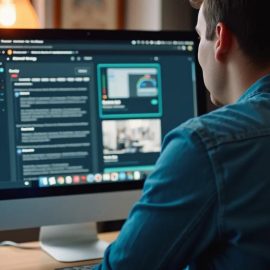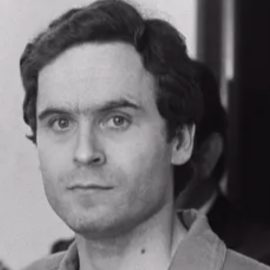

This article is an excerpt from the Shortform book guide to "Going Infinite" by Michael Lewis. Shortform has the world's best summaries and analyses of books you should be reading.
Like this article? Sign up for a free trial here.
Who is Sam Bankman-Fried? How did he make his money? How did he lose it?
In just a few years, Sam Bankman-Fried went from being a relative nobody to the architect of a cryptocurrency empire whose net worth neared $30 billion. But, even quicker than his empire burst onto the scene, it crumbled.
Continue reading for an overview of Michael Lewis’s Going Infinite: The Rise and Fall of a New Tycoon.
Overview of Going Infinite: The Rise and Fall of a New Tycoon
You might not have heard of Sam Bankman-Fried until November 2022, when the news broke that his cryptocurrency exchange, FTX, had lost nearly $10 billion of its clients’ money. In Going Infinite: The Rise and Fall of a New Tycoon (2023), financial journalist Michael Lewis provides a rare glimpse into the inner workings of Bankman-Fried’s astounding rise and fall. And, although Bankman-Fried is currently charged with various counts of fraud, Lewis suggests that the case against Bankman-Fried is less damning than outsiders believe.
Through hundreds of interviews with Bankman-Fried and many days spent at FTX’s headquarters in the Bahamas prior to and during its implosion, Lewis had unparalleled access to Bankman-Fried that yields unique insight into the situation at FTX. Moreover, as he did in other bestsellers such as Liar’s Poker, Moneyball, and The Big Short, Lewis uses storytelling to weave together the disparate threads of Bankman-Fried’s life and career.
(Shortform note: Although Lewis received praise for his previous work in financial journalism, Going Infinite has been met with many negative reviews. For instance, one critical review alleges that Lewis’s unique access to Bankman-Fried left him infatuated with the enigmatic character and unwilling to acknowledge Bankman-Fried’s criminal activity. Another reviewer writes that, in Going Infinite, Lewis naively tries to paint Bankman-Fried as an “unsung hero”—the winning formula in his books like Moneyball and The Big Short. Finally, one last reviewer even notes that Lewis had largely finished Going Infinite before FTX’s collapse, leaving him rushing to rewrite the book after Bankman-Fried’s downfall.)
We’ll break down Going Infinite into three main parts. First, we’ll examine Lewis’s account of Bankman-Fried himself, outlining his transition from an adolescent social outcast to a Wall Street trader committed to “effective altruism.” Next, we’ll discuss how Bankman-Fried built his cryptocurrency empire, focusing on the development of his two companies—FTX and Alameda Research—and his uses for his newfound wealth. Finally, we’ll assess the collapse of Bankman-Fried’s empire, examining the missing $8.8 billion at the heart of FTX’s collapse and Lewis’s reasons for thinking it may yet turn up. We’ll also discuss alternative accounts of Bankman-Fried’s actions at FTX and dive deeper into the nature of cryptocurrency.
Who Is Sam Bankman-Fried?
Before discussing his cryptocurrency empire, we’ll explore who Bankman-Fried is in the first place. We’ll begin with Lewis’s portrayal of Bankman-Fried before he became a crypto mogul, explaining why he spent his entire life as a social outcast, why he joined the effective altruism movement, and how he stumbled onto massive success as a rookie trader on Wall Street.
The Social Outcast
According to Lewis, Bankman-Fried has been a social outcast throughout his life, largely because he doesn’t understand—or outright disregards—social conventions that others deem important. We’ll examine how Bankman-Fried navigates social settings and how that’s left him chronically lonely.
Bankman-Fried’s Disregard for Social Norms
Lewis says that Bankman-Fried has struggled with social norms throughout his life, and this struggle continued even as he became one of the world’s wealthiest and most powerful individuals. To illustrate, we’ll look at three key examples: Bankman-Fried’s difficulty producing facial expressions, his behavior during virtual meetings, and his lack of concern for his appearance.
Lewis first relates that, in one of his interviews, Bankman-Fried noted that he never understood the point of facial expressions growing up—he told Lewis that he didn’t understand why he was supposed to smile while listening to other people speak. In fact, Bankman-Fried even told Lewis that as a trader on Wall Street, he forced himself to fake facial expressions so that his coworkers would find him more likable.
Bankman-Fried also showed little regard for social norms when meeting with influential people online. According to his head of public relations, Natalie Tien, this was the norm: Whenever Bankman-Fried took a one-on-one meeting via Zoom, he would distract himself with video games the entire time. For example, during a Zoom meeting with Vogue editor Anna Wintour, he regularly minimized the Zoom tab to play video games, only returning to Zoom when Wintour asked him a question that required more concentration.
Finally, Bankman-Fried showed no concern for his appearance, almost exclusively wearing dirty t-shirts and cargo shorts. Lewis reports that, in one exception, Bankman-Fried decided to wear a suit for his meeting with Senate Minority Leader Mitch McConnell, but he neglected to clean it, leaving him with a disheveled, wrinkled suit to meet one of the US’s most important politicians.
Bankman-Fried’s Loneliness in Childhood and Adulthood
Lewis suggests that, because Bankman-Fried didn’t adhere to social norms, he experienced chronic loneliness in childhood and adulthood. As a child, for instance, Bankman-Fried only had one friend, with whom he mostly played Magic: The Gathering. Bankman-Fried’s only brother, Gabe, reported that they weren’t close as children—he viewed Sam as more of a fellow tenant than a brother. Moreover, Bankman-Fried’s loneliness as a child persisted into adulthood: Lewis notes that, in Bankman-Fried’s private journal as an adult, he confessed feeling as if no one understood him or was interested in him.
The Effective Altruist
Lewis writes that, although Bankman-Fried didn’t adhere to social norms, he did adhere to the tenets of effective altruism, a philosophical and social movement that advocates living one’s life in a way that maximizes net good for humanity.
According to Lewis, Bankman-Fried’s commitment to effective altruism flowed from his upbringing as a utilitarian—someone who thinks that actions are morally right only if they create the maximum amount of net happiness for everyone. Lewis notes that Bankman-Fried’s parents were utilitarians, and their beliefs clearly rubbed off on Bankman-Fried himself: He was actively participating in online utilitarian message boards at age 12.
So, when Oxford philosopher William MacAskill—one of the architects of the effective altruism movement—met Bankman-Fried during the latter’s junior year at MIT, Bankman-Fried immediately bought into his arguments and decided to embrace effective altruism, thus dedicating his life to saving the most lives possible.
However, Lewis points out that, even within the effective altruism movement, there was no consensus on the single best career path for effective altruists. For instance, he notes that while becoming a doctor and saving lives in rural countries would seem like an appealing option for effective altruists, you could potentially do more good by working in finance and earning enough to subsidize the careers of several doctors in rural countries. As we’ll soon see, Bankman-Fried decided to embrace this notion of earning to give in particular.
The Successful Wall Street Trader
Bankman-Fried’s first experience of earning to give occurred on Wall Street, Lewis relates. At the same time Bankman-Fried became an effective altruist, he interned as a trader at the quantitative trading firm Jane Street Capital.
Lewis writes that Bankman-Fried was invited to interview with Jane Street Capital (along with two other firms) after submitting his resumé on a whim at MIT’s career fair. For his interview, the Jane Street traders had Bankman-Fried do nothing but play complex probability games (like variants of classical poker) with ever-changing rules. And, he excelled at them, demonstrating an intuitive understanding of how to play the games in a way that maximized his expected value.
After graduating from MIT, Bankman-Fried accepted a full-time offer at Jane Street and worked there for three years. Lewis notes that Bankman-Fried was exceptional at his job: His superiors ranked him the best trader in his class, and at the end of his third year he was poised to earn a bonus of $1 million. Further, Bankman-Fried’s superiors told him that in 10 years, he could expect to be earning, at minimum, $15 million per year.
Nonetheless, Lewis reports that Bankman-Fried was unsatisfied at Jane Street, even though he was donating nearly all of his salary to effective altruism causes. According to Lewis, he realized it was unlikely that the position he’d taken on a whim at Jane Street was maximizing his value to the world, as effective altruism required.
Moreover, cryptocurrencies were booming in 2017, with a billion dollars of crypto traded daily, even though traditional trading firms like Jane Street wouldn’t touch them. So, Bankman-Fried realized that he could likely earn (and thus give) substantially more—by his estimation, potentially $1 million a day—by trading in the inefficient crypto market. For this reason, Bankman-Fried left Jane Street in 2017 to start his own quantitative cryptocurrency trading firm: Alameda Research.
The Rise of Bankman-Fried’s Empire
The moment that Bankman-Fried left Jane Street Capital, his quest to build an empire began. We’ll examine how Bankman-Fried quickly became one of the wealthiest individuals in the world, detailing his ascent to stardom through the growth of his two companies—Alameda Research, a quantitative cryptocurrency trading firm, and FTX, an international cryptocurrency exchange. We’ll also discuss what Bankman-Fried did with his newfound wealth as his influence grew not just in the US, but the world.
The Development and Rise of Alameda Research
According to Lewis, Bankman-Fried’s empire began with Alameda Research, the quantitative cryptocurrency trading firm that Bankman-Fried started upon leaving Jane Street Capital. As Lewis relates, Bankman-Fried grew Alameda Research from a small group of effective altruists to a firm generating upwards of a billion dollars in annual profit by 2020.
Alameda’s beginning wasn’t seamless, however. Lewis writes that, although Bankman-Fried had convinced wealthier effective altruists to loan him $170 million, by February 2018, the trading system that he had implemented was losing half a million dollars daily. Moreover, tensions started to mount with his employees—a small group of 20 effective altruists—as Bankman-Fried refused to take their concerns seriously, even playing video games during key one-on-one meetings with his team. These tensions culminated in April of 2018, when his entire management team and half his employees quit in protest.
Lewis reports that with nobody left to challenge him, Bankman-Fried made the bold decision to turn on Modelbot, an automated trading program that exploited international cryptocurrency price disparities to earn quick profits. Modelbot might, for example, notice that Bitcoin was selling for $5,000 in the US and $5,100 in Taiwan, and automatically purchase it in the US and sell it in Taiwan to guarantee a profit. Ultimately, Modelbot was a massive success: Alameda made a profit of $30 million in 2018, even after the initial investors withdrew most of their funds when Bankman-Fried’s entire management team quit. And, as Lewis relates, these profits grew larger over time, with Alameda making $100 million in 2019 and $1 billion in 2020.
The Development and Rise of FTX
Although Alameda Research eventually became wildly successful, as of 2018, Bankman-Fried didn’t believe it was earning enough money for effective altruism—of its $30 million profit that year, Alameda had to pay the majority to former investors, taxes, and severance packages, leaving only $1.5 million to donate to effective altruism causes. Lewis writes that, consequently, Bankman-Fried decided to open FTX, an international cryptocurrency exchange, in April 2019 to earn even more money.
Cryptocurrency exchanges, Lewis explains, provide a platform for purchasing and selling an array of cryptocurrencies for a small fee. They require an immense amount of trust in order for customers to deposit thousands (or even millions) of dollars on the platform. But, as Lewis points out, Bankman-Fried’s personality didn’t instill trust—a social outcast who played video games during crucial meetings wasn’t the person you wanted managing your money. For this reason, Bankman-Fried focused on two key aspects of FTX to develop consumer confidence: its technical superiority and its endorsement deals.
FTX’s Technological Superiority
To prove that his new platform was reliable, Lewis says, Bankman-Fried created a cryptocurrency exchange that was technologically superior, especially when it came to futures—contracts that allow customers to make outsized bets on whether cryptocurrencies would rise or fall, using a smaller proportion as collateral. For example, if one Bitcoin was trading at $20,000, you could pay $5,000 as collateral to enter into a futures contract with a seller that obligates you to purchase Bitcoin at $20,000 one month in the future. Then, if Bitcoin rose to $22,000, you would purchase it at $20,000 and immediately sell at $22,000 to net a $2,000 profit (in addition to retaining your collateral). By contrast, if Bitcoin dropped to $16,000, the $4,000 loss would be taken out of your collateral.
Before FTX, cryptocurrency exchanges were often liable for losses that exceeded their customers’ collaterals. Returning to the previous example, if Bitcoin dropped from $20,000 to $13,000, your $5,000 collateral wouldn’t be able to cover the loss. Thus, these losses were often socialized, meaning they were taken out of other customers’ accounts. However, Bankman-Fried’s FTX cofounder, coding expert Gary Wang, designed a new system that instantly liquidated losses that outstripped customers’ collateral, which avoided socialized losses. Thus, FTX instantly became more attractive than other exchanges without that feature.
FTX’s Endorsement Deals
Lewis writes that Bankman-Fried also sought to generate customer trust through endorsement deals with celebrities whose personalities were more magnetic than his own. For example, he paid Tom Brady $55 million for 20 hours of his time, in addition to paying Steph Curry $31.5 million and Shark Tank entrepreneur Kevin O’Leary nearly $16 million. Bankman-Fried understood that these figures would be more appealing to his target audience—younger men—than he could ever hope to be.
Thus, as Lewis relates, Bankman-Fried managed to develop another company that was on a similar scale to Alameda Research—in both 2020 and 2021, FTX earned over a billion dollars annually in revenue, becoming the world’s second-largest cryptocurrency exchange in the process. In 2021, Bankman-Fried even raised $2.3 billion from venture capitalists in exchange for a 6% stake in FTX, suggesting that FTX was then worth around $40 billion.
FTX’s Lack of Organizational Structure
Although FTX became the cornerstone of Bankman-Fried’s cryptocurrency empire, Lewis argues that FTX nonetheless suffered from a nonexistent organizational structure. Lewis reports that, according to FTX’s company psychiatrist George Lerner, Bankman-Fried notoriously hated organization charts, refusing to assign anyone in FTX formal titles—even as the company ballooned to over 300 employees.
Lerner thus attempted to develop an organizational chart himself, which to date is the only organizational chart of FTX. He found that, despite its financial success, the company was structurally in disarray: It had no chief financial officer, no chief risk officer, and nobody working in human resources. And, as we’ll soon see, this total lack of structure made it difficult for any of FTX’s employees to see the concrete reasons behind its later collapse.
Bankman-Fried’s Uses for His Newfound Wealth
Having built his empire, Bankman-Fried quickly became one of the world’s wealthiest individuals—Lewis reports that, in November 2021, Forbes estimated Bankman-Fried was worth $22.5 billion, making him the 60th wealthiest person on Earth. Lewis writes that Bankman-Fried had three primary uses for his wealth, all of which were ultimately geared toward effective altruism: Lobbying politicians to further his business interests, donating money to mitigate existential threats, and minimizing the influence of Donald Trump.
Use #1: Promoting His Business Interests
First, Bankman-Fried donated to politicians and political groups with the aim of allowing FTX users to trade futures contracts in the US (where it was illegal, despite being legal in other countries). Although Lewis notes that Bankman-Fried donated the least amount of money to this particular aim—for instance, a million dollars here and there—Bankman-Fried would’ve been able to extend his crypto hegemony into the US if he succeeded, thus earning him more money that he could donate.
Use #2: Preventing Existential Threats
Next, Bankman-Fried poured large amounts of money into causes designed to fight existential threats, such as an asteroid destroying the earth, or the possibility of AI eliminating our species. Lewis observes that, in particular, Bankman-Fried focused on pandemic prevention in the wake of the Covid-19 pandemic. For instance, he met with Senate Minority Leader Mitch McConnell (himself a polio survivor) to discuss the possibility of funding $10 billion in the US Department of Health and Human Services for pandemic research—Bankman-Fried estimated that $100 billion would actually be needed, but $10 billion was a good start.
Bankman-Fried’s reasoning in attempting to prevent existential threats was straightforward: Even if these existential threats were unlikely, they would cause such pervasive death that on balance, trying to prevent them still yielded an astronomically high number of expected lives saved. For example, even if there was only a 1% chance of a pandemic that wiped out (say) 5 billion human lives, if we could guarantee that such a pandemic didn’t occur, we would be saving an expected 50 million lives (5 billion times .01).
Use #3: Minimizing the Influence of Donald Trump
Finally, Lewis relates that Bankman-Fried used his wealth to combat Donald Trump’s influence on US politics and what Bankman-Fried saw as Trump’s assault on US elections. Again, Mitch McConnell was a surprising ally: Bankman-Fried donated millions of dollars to McConnell to help defeat many of Trump’s preferred candidates for the US Senate. Further, Bankman-Fried’s team even reached out to Trump directly to see whether it would be legal to pay Trump to sit out the next election, and if so, whether Trump was interested—according to Bankman-Fried’s team, Trump would have considered not running for re-election for $5 billion.
The Collapse of Bankman-Fried’s Empire
Although Bankman-Fried’s cryptocurrency empire skyrocketed in just a few years, its collapse was even more sudden, lasting just a few days. We’ll examine Lewis’s account of the downfall of FTX, focusing on three key aspects: The precipitating events on November 6, 2022, that caused mass withdrawals from FTX, the missing $8.8 billion in customer deposits that FTX seemingly lost, and the aftermath of this massive scandal.
Precipitating Events Leading to the Collapse
Although FTX’s downfall seemed instantaneous to outsiders, Lewis writes that a series of cascading events precipitated the collapse. We’ll focus on three such events: A tweet from FTX’s largest competitor that undermined confidence in FTX, a response from Alameda’s CEO Caroline Ellison that exacerbated the issue, and mass withdrawals by FTX users.
Event #1: Changpeng Zhao’s Tweet
Lewis relates that, on November 6, 2022, Changpeng Zhao (CZ)—the CEO of the world’s largest cryptocurrency exchange, Binance—tweeted his intent to sell his shares of FTT (FTX’s own cryptocurrency that functioned as equity in FTX). In justifying his decision, CZ cited only “recent revelations” that convinced him to sell FTT. According to Lewis, this tweet caused many other holders of FTT to sell, thus dropping FTT’s price, as they reasoned that CZ wouldn’t be selling without good reason.
Event #2: Caroline Ellison’s Response
In response to CZ’s tweet, Alameda Research CEO Caroline Ellison—Bankman-Fried’s former romantic partner, who had only become CEO in August 2022—attempted to stabilize FTT’s price with a tweet of her own. Lewis notes that, only 16 minutes after CZ’s initial tweet, Ellison tagged CZ in a tweet offering to repurchase his FTT tokens at $22 per share—the market price at which FTT was trading. According to Lewis, Ellison’s intention was to prevent FTT from tanking through a show of confidence in FTT’s value.
However, Lewis points out that Ellison’s tweet had the opposite effect. Rather than quelling investors’ fears, it caused them to ask a question: Why was Alameda Research, the largest owner of FTT, so invested in keeping its price at $22? In response, investors drew the conclusion that Alameda must be using FTT as collateral to borrow money, and thus needed its price to stay at $22 to avoid a margin call—a demand from lenders to increase collateral value. The perception that Alameda had been gambling with FTT in turn caused massive sales of FTT, and its price dropped from $22 to $7 overnight.
Event #3: Mass Withdrawals By FTX Users
Finally, because FTT functioned as stock in FTX, its sharp drop in value led FTX users to withdraw money from FTX in droves. According to Lewis, on the night of Sunday, November 6, FTX users were withdrawing $100 million from FTX per hour, totaling $2 billion over the course of the day. Then, on Monday, November 7, FTX users tried to withdraw another $4 billion. Lewis relates that, by Tuesday morning, FTX had already issued $5 billion in withdrawals, with several billion more dollars in “pending” withdrawals.
The Missing Money at the Heart of the Collapse
However, Lewis points out that withdrawals shouldn’t have caused a catastrophe—though they cut into FTX’s short-term trading volume, that should have been short-lived once customers realized FTX was stable and redeposited their money. In reality, the opposite occurred: After processing $5 billion in withdrawals, FTX ceased allowing withdrawals because it lacked the money to pay the remaining $8.8 billion customers were asking for. In other words, customers who had collectively deposited a total of nearly $9 billion at FTX were told their money was gone.
As Lewis relates, it became obvious that FTX lacked the money to process further withdrawals by Tuesday, when it simply stopped processing further withdrawal requests. One week afterward, FTX’s employees had overwhelmingly fled its Bahamas headquarters, fearing legal retribution from Bahamas authorities. However, Lewis notes that FTX’s Chief Operating Officer, Constance Wang, stayed in the Bahamas with one goal—to find what happened to the missing $8.8 billion so that she could act as a witness in the case against Bankman-Fried.
Lewis says that Wang found a tentative answer when scouring financial documents for Alameda Research (which shared the same headquarters as FTX). According to these documents, over $8.8 billion was listed under Alameda Research’s liabilities as “customer deposits,” even though as a private trading firm, it shouldn’t have had any customer deposits. In other words, the documents suggested that FTX had been using customer deposits in Bankman-Fried’s private trading fund for Alameda Research. But, puzzlingly, the same documents showed only $3 billion in liquid assets for Alameda Research, meaning $6 billion remained unaccounted for. Hence, these documents just produced another question: What happened to that $6 billion?
Bankman-Fried’s Partial Explanation of the Missing $6 Billion
Lewis notes that in Bankman-Fried’s conversations with Wang, Bankman-Fried provided a plausible explanation as to why FTX’s customer deposits were stored in Alameda’s trading fund. According to Bankman-Fried, FTX had been unable to acquire a legitimate bank account because traditional banks were wary of cryptocurrency. Thus, FTX had nowhere to store its customer deposits, and so he decided to use Alameda as a functional bank for FTX’s deposits, with the caveat that the money was supposed to go untouched within Alameda.
But, Lewis points out that although this explanation answers why FTX’s customer deposits were stored in Alameda, it doesn’t answer where the missing $6 billion went. Eventually, Bankman-Fried told Lewis a small part of the story: In 2021, FTX had lost $1 billion to hackers, and decided to keep quiet about it to discourage further hacks. Still, that left $5 billion unaccounted for, with no plausible explanation—Bankman-Fried flatly denied that Alameda Research had lost the $5 billion with risky investments, and Lewis notes that such massive losses in an elite quantitative trading firm would be unheard of. So, Lewis suggests, the question of the missing $5 billion seemed like an unsolvable mystery.
The Aftermath and Lewis’s Verdict on the Collapse
On November 11, in the immediate aftermath of FTX’s collapse, Bankman-Fried formally declared bankruptcy—his company that had been recently valued at $40 billion was insolvent. And, although public onlookers were quick to assume Bankman-Fried had committed fraud, Lewis argues that several factors undermine this narrative. We’ll examine two such factors: The findings of John Ray, FTX’s new CEO tasked with helping US officials find the missing money, and Bankman-Fried’s decision to go to trial.
Factor #1: John Ray’s Investigation
After Bankman-Fried declared bankruptcy, FTX’s lawyers from Sullivan & Cromwell appointed John Ray as interim CEO of FTX. Ray’s task, Lewis relates, was to find as much of FTX’s missing funds as possible to return to its creditors. And, according to Lewis, Ray managed to find significant portions of the missing funds even though he lacked experience with cryptocurrencies. For example, Ray found the billion dollars stolen by a rogue hacker in Mauritius, and by his own report, he recovered a total of $7 billion by June 2023. In light of Ray’s success, Lewis concludes that the money might not be missing after all.
Factor #2: Bankman-Fried’s Decision to Go to Trial
Further, Lewis suggests that Bankman-Fried’s willingness to stand trial is evidence of his innocence because it’d be irrational to stand trial if he were guilty. Lewis explains that, in December 2022, Bankman-Fried was extradited from the Bahamas to the US, where he demanded to go to trial rather than accept a plea deal.
Lewis points out that, of those who go to trial against the US government, less than 1% are acquitted, with 90% instead opting to take a plea deal. For Bankman-Fried’s decision to go to trial to make sense, he would need a compelling defense. So, although Bankman-Fried’s critics act as if his conviction is a foregone conclusion, Lewis suggests that their faith in Bankman-Fried’s guilt might just prove mistaken.

———End of Preview———
Like what you just read? Read the rest of the world's best book summary and analysis of Michael Lewis's "Going Infinite" at Shortform.
Here's what you'll find in our full Going Infinite summary:
- How Sam Bankman-Fried created an empire—and then destroyed it
- A look at Bankman-Fried's life before he became a crypto mogul
- How effective altruism led Bankman-Fried to his career in finance






